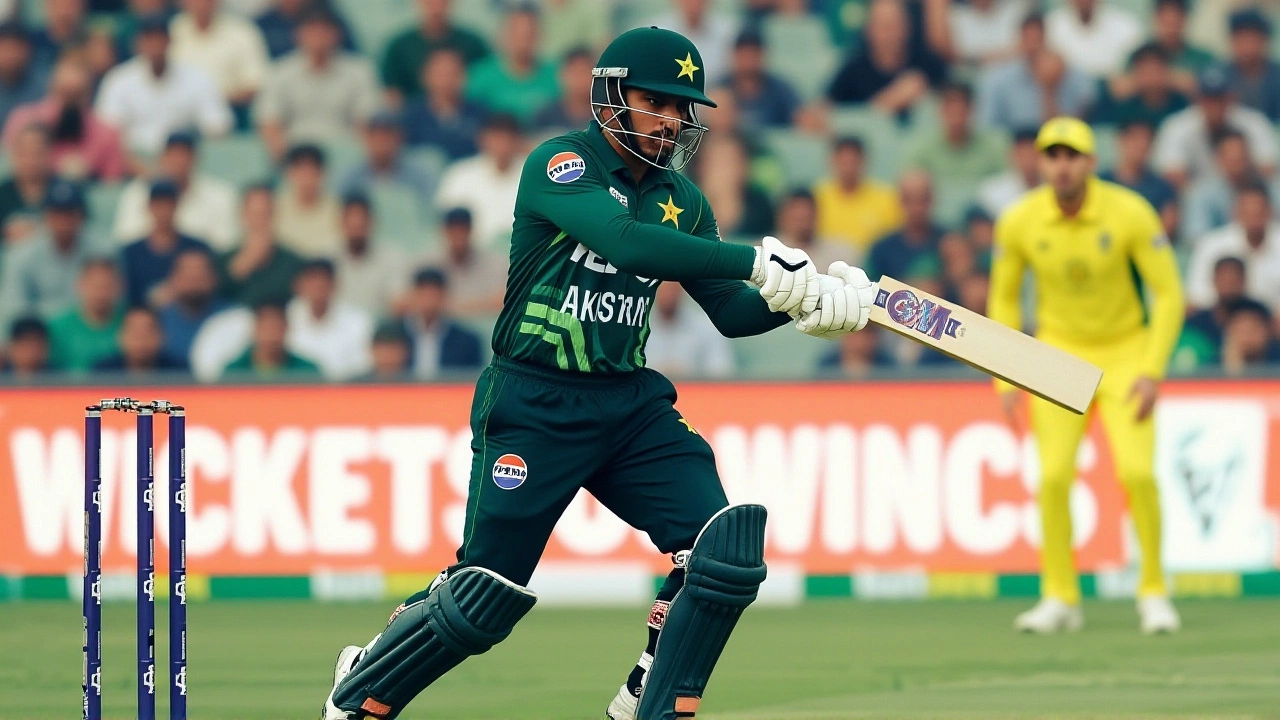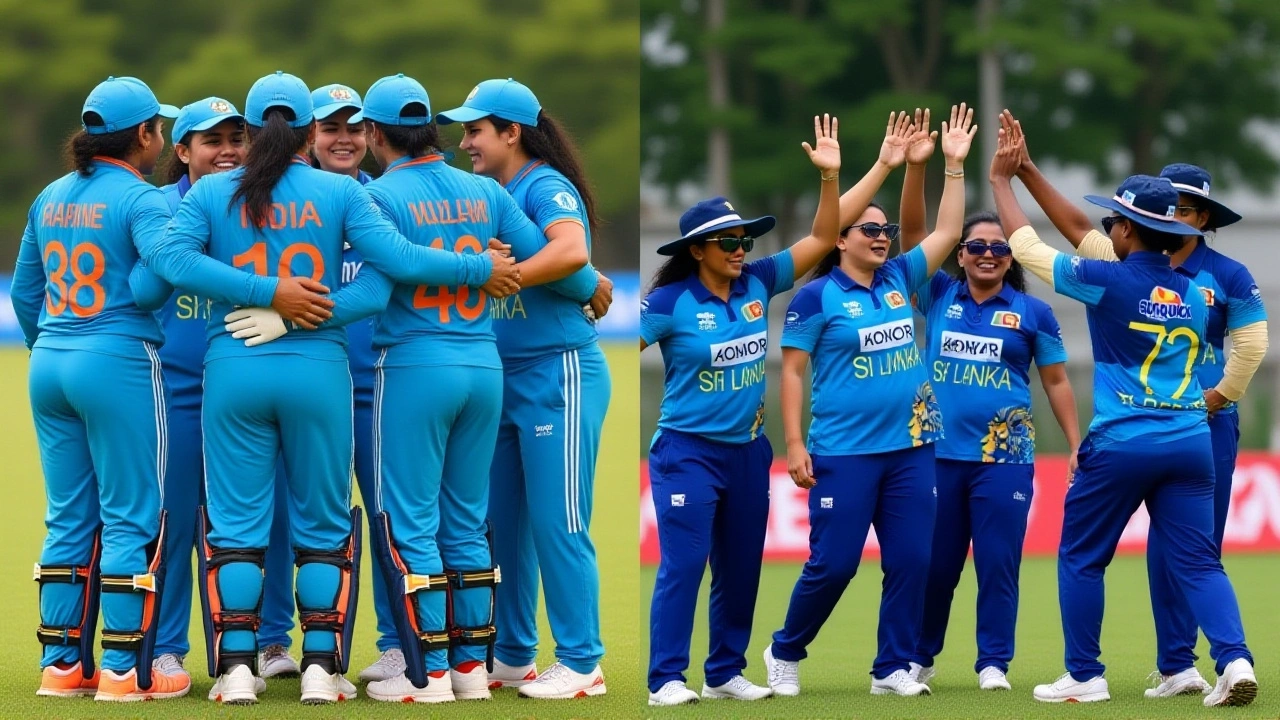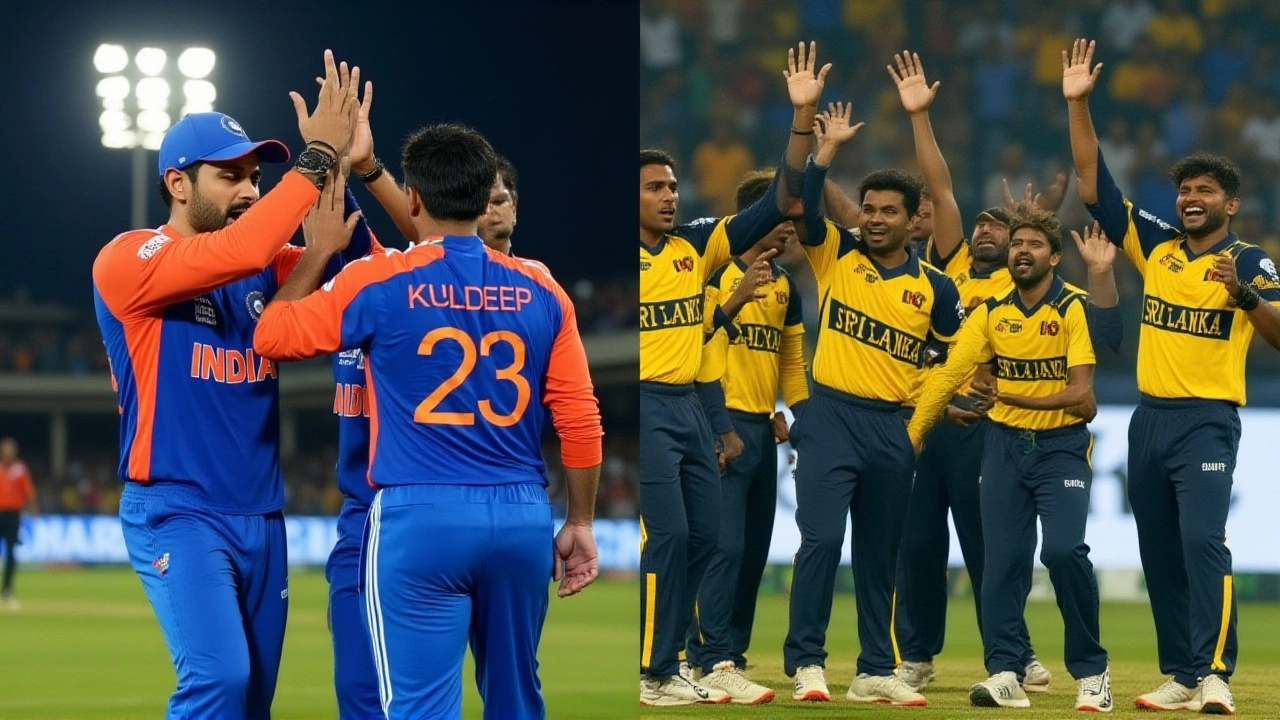India survived a heart-stopping tie against Sri Lanka to clinch a spot in the Asia Cup 2025 Dubai International Cricket Stadium final — not with a dominant performance, but with a nail-biting Super Over that left fans divided and officials scrambling. On November 26, 2025, both teams finished their 20 overs at 202/5, the first time any side crossed 200 in this edition of the tournament. Then came the twist: India won the Super Over by two wickets, chasing three runs off one ball, while Sri Lanka could manage only two. The victory wasn’t just about runs — it was about nerves, controversy, and a moment that will be replayed for years.
When the Batting Fireworks Collided
Sri Lanka’s innings felt like a masterclass in controlled chaos. Pathum Nissanka, the opener, smashed 107 off just 58 balls — the fastest century of the tournament — blending brutal pulls with elegant drives. Kusal Perera, his partner, added 58 off 32, turning the middle overs into a demolition derby. Their 127-run stand in 70 balls broke India’s rhythm. For a while, it looked like Sri Lanka would post 240. But then came Varun Chakaravarthy’s googly — a delivery that spun wickedly and trapped Kusal Perera leg before, only for Sanju Samson to whip off the bails in a lightning stumping. The crowd gasped. The umpires consulted. The decision stood. That moment shifted the momentum. India’s reply wasn’t pretty, but it was relentless. Abhishek Sharma’s 61 off 31 balls was pure aggression — he cleared the ropes five times in his first 15 balls. Tilak Varma, often criticized for slow starts, delivered his best T20 innings: 49 off 34, anchoring the chase when India slumped to 124/4. Axar Patel’s 21 off just 11 balls — including a six over long-on — pushed India past 200. The scoreboard read 202/5. The same as Sri Lanka’s. The stadium held its breath.The Super Over That Split the Nation
The first Super Over in Asia Cup 2025 history was pure theater. Arshdeep Singh, India’s death-over specialist, bowled with ice in his veins. On the first ball, Suryakumar Yadav launched a full toss over midwicket for three. Shubman Gill, on strike for the second ball, faced a yorker — and missed. He didn’t score. Not one run. Yet India only needed three. Sri Lanka’s turn: Kamindu Mendis swung hard at Arshdeep’s first delivery — and edged it to Gill at short fine leg. One run. Dasun Shanaka, the captain, came in. He swung. Missed. Ball four. Ball five. He missed again. Three dot balls. Two runs total. India won. Pandemonium. But here’s the thing — the controversy didn’t stop with the scoreboard. Fans and analysts alike questioned why Shubman Gill, who had scored 61 in the main innings, was sent in to face the second ball of the Super Over — with zero runs to his name. Why not Suryakumar? Why not Tilak? The decision, made by India’s captain Rohit Sharma, was baffling to many. No one was injured. No one was out of form. Yet Gill, a top-order batter, was asked to face a high-pressure ball with no room for error. He didn’t score. And India still won.
What Sri Lanka’s Captain Said
Charith Asalanka, Sri Lanka’s captain, didn’t hide his disappointment — but he didn’t hide his pride either. “It was a fabulous game,” he told Indian Express. “We were handling the game nicely until Varun and Kuldeep bowled those really nice overs. It was unbelievable hitting by Nissanka and Perera.” He smiled when asked about his Super Over message: “I just said to score as many runs as you can.” There was no bitterness. No blame. Just a quiet acknowledgment that India’s experience — Arshdeep’s nerve, Hardik Pandya’s 1-over spell of 1/7, Kuldeep Yadav’s 4 overs of 1/31 — made the difference. Asalanka’s team had played fearless cricket all tournament. But in the end, India’s composure under pressure was sharper.Why This Match Matters Beyond the Final
This wasn’t just about advancing to the final. It was about momentum. India had beaten Pakistan by six wickets in their previous Super Four game. Then they crushed Bangladesh by 41 runs. Now, they’ve survived a tie against a team that out-batted them. ESPN captured it perfectly: “India, if they did not have momentum before, now have plenty of it heading into the final.” For Sri Lanka, the loss confirmed their exit — their third straight defeat in the Super Four. Pathum Nissanka’s 107 was the highest individual score of the tournament. But it wasn’t enough. Their batting sparkled. Their bowling, especially in the death, didn’t. Arshdeep’s two wickets in the Super Over — and the pressure he applied — exposed the cracks. The Asian Cricket Council, headquartered in Sharjah, now has its final: India vs. the winner of the other Super Four clash. The Dubai International Cricket Stadium, with its 25,000-seat capacity, will be packed again. Floodlights will blaze. And the world will watch to see if India’s momentum holds — or if someone else can pull off the upset.
What’s Next for Both Teams?
India’s path to the final was built on adaptability. They’ve chased 172, posted 168, and now survived 202. Their middle order, once a concern, has shown grit. Suryakumar Yadav, Tilak Varma, and Axar Patel are now key cogs. But their Super Over strategy — sending in Gill — raises questions. Will they change it? Or double down on experience? Sri Lanka, meanwhile, has a rebuilding phase ahead. Nissanka and Perera proved they can dominate. But the lower order — Charith Asalanka (5), Wanindu Hasaranga (0), and Dasun Shanaka (0 in Super Over) — need to step up. The 2025 tournament may have ended, but the foundation for 2026 is being laid.Frequently Asked Questions
Why was Shubman Gill sent in for the Super Over when he had zero runs?
Shubman Gill, despite scoring 61 in the main innings, was sent in to face the second ball of the Super Over — a decision that puzzled analysts. He had not batted in the Super Over yet, and India had other aggressive options like Suryakumar Yadav or Tilak Varma. The reasoning, if any, was never explained publicly. His failure to score didn’t cost India, but the choice sparked debate about captaincy tactics under pressure.
Has this ever happened before in an Asia Cup final stage?
Yes — but only once before in the Super Four stage. In 2018, India and Bangladesh tied in the Asia Cup, leading to a Super Over. India won that too, with MS Dhoni and K.L. Rahul guiding them. But this is the first time a tie has gone to a Super Over in the 2025 edition, and only the third in Asia Cup history. The 2025 match stands out for the high-scoring tie (202/5) and the dramatic final ball.
How did Pathum Nissanka’s 107 compare to other innings in the tournament?
Nissanka’s 107 off 58 balls was the highest individual score of the 2025 Asia Cup and the fastest century of the tournament. It surpassed Virat Kohli’s 98 off 62 balls against Pakistan and was the only century in the Super Four stage. His strike rate of 184.48 was the highest among all centurions in the tournament, making it one of the most explosive innings in Asia Cup history.
What role did the Dubai pitch play in the match?
The Dubai International Cricket Stadium pitch offered little assistance to bowlers early on, favoring stroke play. Spinners like Kuldeep Yadav and Varun Chakaravarthy found purchase later, especially in the death overs. The surface dried out as the match progressed, making it harder to score boundaries in the final five overs — which is why India’s 202/5 was considered a huge total. The dew factor, often a factor in Dubai night games, was minimal, giving bowlers better grip.
Who were the key bowlers in the Super Over, and why did they succeed?
Arshdeep Singh was the architect of India’s win, taking two wickets in the Super Over — Kamindu Mendis and Dasun Shanaka — with a mix of yorkers and slower balls. His ability to vary pace and length under pressure was crucial. Sri Lanka’s bowlers, by contrast, were too predictable. Mendis bowled a full toss to Suryakumar Yadav, and Shanaka’s second delivery was too short. Arshdeep’s calmness and experience in high-stakes finishes made the difference.
What does this result mean for India’s chances in the final?
India enters the final with immense momentum — three wins in the Super Four, including two high-pressure chases. Their batting depth is now proven, and their death bowling — led by Arshdeep and Hardik Pandya — has shown resilience. But they’ll face a team that’s also rested and hungry. The final won’t be easy, but India’s ability to win ugly — under pressure, with flawed decisions — might be their greatest strength.
